An overview of the crystallinity of cocoa butter
- Like
- Digg
- Del
- Tumblr
- VKontakte
- Buffer
- Love This
- Odnoklassniki
- Meneame
- Blogger
- Amazon
- Yahoo Mail
- Gmail
- AOL
- Newsvine
- HackerNews
- Evernote
- MySpace
- Mail.ru
- Viadeo
- Line
- Comments
- Yummly
- SMS
- Viber
- Telegram
- Subscribe
- Skype
- Facebook Messenger
- Kakao
- LiveJournal
- Yammer
- Edgar
- Fintel
- Mix
- Instapaper
- Copy Link
Posted: 9 December 2016 | Charlotte Levy PhD | 2 comments
Chocolate makes for one of the most interesting products, because although it is incredibly tasty, it also demonstrates a plethora of scientific principles. The development of chocolate as we know it today has a rich cultural history, and over the years scientists and engineers have refined the process of making such celestial pleasure from the bitter cocoa bean, by utilising their knowledge of chocolate chemistry.
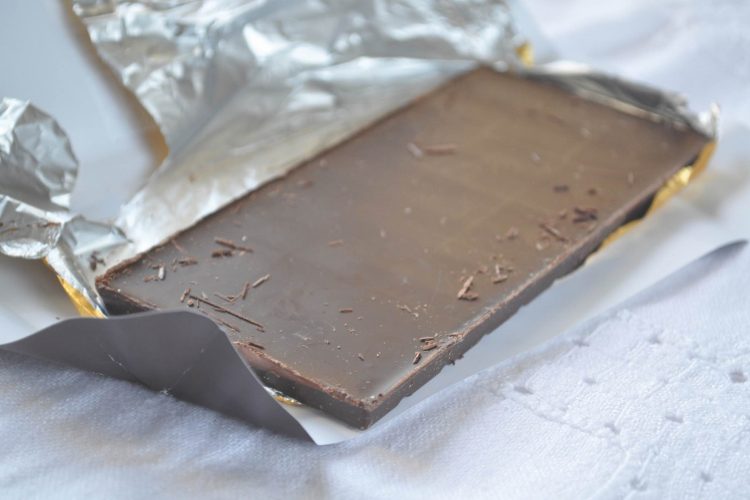

The aim of this article is to outline some of the basic chemical principles behind the science of chocolate, and how these principles are utilised by scientists, engineers, chocolate makers and pâtissiers to make some of the most beautiful confections you see lining the bakeries and chocolate shops of Paris and London.
Harvesting the cocoa beans and a very brief history
Chocolate begins with the cocoa tree, or Theobroma cacao, which means ‘food of the gods’. The tree grows along a strip of the globe than spans approximately ten degrees north and south of the Equator1 known as the ‘cocoa belt’. Farmers harvest the beans and then ferment them for approximately four to seven days. They are then sun-dried, which can take several days, before being transported to the manufacturer.
It was believed that the tree was first cultivated in the southern Gulf coast of Mexico sometime before 600 BC.2 The Aztecs used roasted ground cocoa beans in a drink served at religious ceremonies, and the beans themselves were even used as a form of currency. Columbus was said to have brought cocoa beans to Spain in the 1500s, where their popularity as a drink, flavoured with various spices and a lot of sugar, flourished in Europe. Although cocoa beans were already used in confectionery items throughout Europe at the time, the Bristolian company, Fry & Son, claim to be the producers of the first chocolate bar in 1847.
Manufacturing from bean to bar
Once received, the manufacturer cleans and roasts the beans. Roasting develops their flavour and aids in the cracking and removal of the shells. The beans are then lightly crushed and passed through impact or tooth rollers, before entering a winnowing machine to help separate the shell and obtain the cocoa nib inside. This prized nib is small, crunchy, and very bitter in taste. A yield of at least 83-84 percent nib should be obtained in order to maximise the profitability of the manufacturing process.3
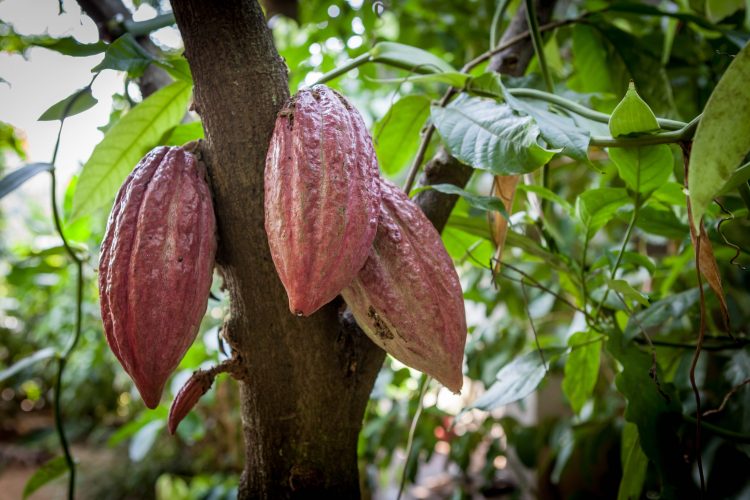

The cocoa tree, or Theobroma cacao, means ‘food of the gods’.
Over half of the nib’s weight is fat,3 which is cocoa butter; the rest being the remaining solid part of the nib, known as ‘cocoa solids’. When the nibs are ground they form a thick paste. This paste then undergoes a refining process in order to reduce the cocoa solid particles to approximately 20-30 microns in size;1,2,4 if the particles are too large the resulting chocolate will have a coarse and gritty mouth-feel, but if they are too small it will be sticky on the palate. This is achieved by processing the paste through a series of rollers. The temperature of the rollers and the size of the gaps in-between them are important in determining the atmospheric conditions and the size of the particles.3 Sugar and lecithin (the emulsifier) are also added, as well as additional cocoa butter in order to provide sufficient lubrication for the sugar particles.2 Other ingredients, such as vanilla, milk powder, and ground cocoa nibs of different origins may also be included.
Conching to form molten chocolate
The refined paste then undergoes the conching process, which was developed by Rodolphe Lindt of Switzerland in 1878,2 and is the final flavour development step in bulk chocolate production. Conching is named after the instrument in which the process is carried out and refers to the shape of the tank, which is similar to that of a conch shell. The friction generated by the mechanical action of the conch causes the cocoa butter to melt, thus creating an extremely aromatic bath of molten chocolate. More cocoa butter is added to enhance its viscosity and flowability, which can be described as a non-Newtonian
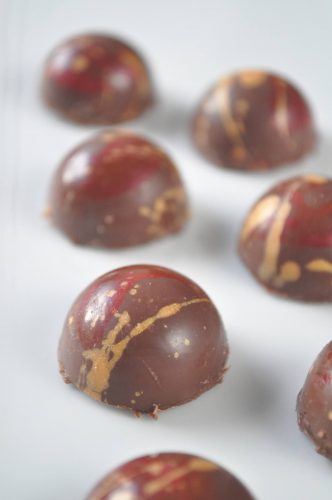

Cocoa butter is an important ingredient in chocolate because it gives the final product many of its important characteristics, such as mouth-feel, glossiness and hardness.
fluid or, more specifically, a mildly shear-thinning fluid.5-7 The rheology of molten chocolate has been extensively studied8 and the laminar flow of chocolate through the pipeline should be maintained at all times. Larger pipes should be installed if any turbulence occurs because the shear stress down a pipe is proportional to its diameter.1 Temperature control is also extremely important, because below certain temperatures the fluid becomes more viscous, which may cause damage to the pipework.
Cocoa butter is an important ingredient in chocolate because it gives the final product many of its important characteristics, such as mouth-feel, glossiness and hardness, and when cooled it contracts, thus making demoulding easier. Conching further develops the chocolate’s flavours by coating each cocoa solid particle evenly with the cocoa butter making for a mellower flavour. The molten chocolate is agitated in the conche, so that the suspended particles do not settle and homogenisation is always achieved. This process can last for days depending on the manufacturer; originally it lasted 96 hours,9 but nowadays it may last for only 7-36 hours.2,9
Tempering chocolate
The last step in the manufacturing process is to cool the molten chocolate to room temperature in a specific way that enables the removal of the latent heat and the gives the final product the desired properties, such as a nice sheen and snap; good mouth-feel; a denser chocolate that demoulds easily; and more resistance to fat bloom, which is a common occurrence when working with chocolate products.10 Tempering is the name given to this process (and is also applied to the cooling of glass and steel), with the aim being to cool the cocoa butter in the most stable crystal form that gives the chocolate the aforementioned desired properties.
The chocolate is cooled to the point of crystallisation, gently reheated to melt the unstable crystals, and cooled again.2 The different cocoa butter crystal forms have slightly different melting points (see Table 1), where the most stable form has the highest melting point. This process is repeated until the final tempered product is obtained – it is a very temperature controlled and automated process. It has been found that the actual temperatures needed for the tempering process varies depending upon the chocolate composition and equipment being used.1
Polymorphism of cocoa butter and fat bloom
The ability of a substance to exist in different crystalline structural forms without any changes in chemical structure is known as polymorphism. The most well known example of polymorphism in science textbooks would probably be that of diamond and graphite: diamond is hard and shiny, whereas graphite is soft and dull, despite them both being made of only carbon. It is the differences in the way the carbon atoms are structurally arranged with each other that gives the two materials their extremely different properties. The polymorphism of certain drugs is an extremely important issue within the pharmaceutical industry and it also affects the food industry because fat molecules can also crystallise in a similar way.
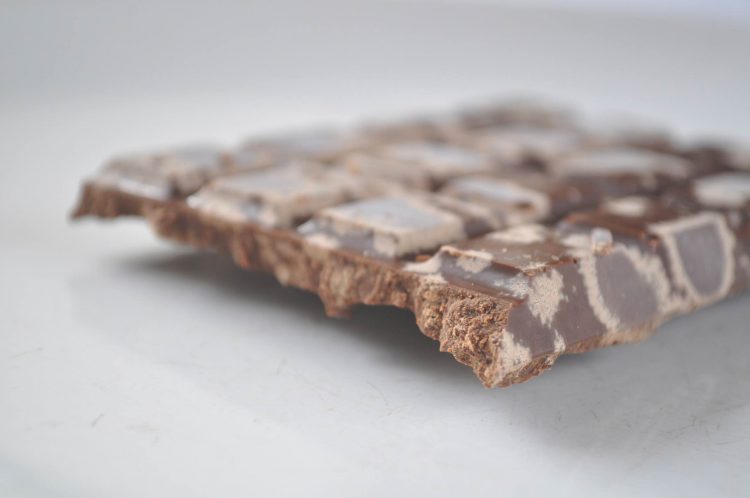

Fat bloom occurs when some of the fat, in the form of unstable cocoa butter crystals, rises to the surface of the chocolate giving the appearance of mould and making the chocolate unattractive and less pleasant to eat.
Cocoa butter fat molecules are complex molecules, and when the molten chocolate is cooled the molecules can stack on top of one another in different ways. Each of these ways is known as a ‘polymorph’. Historically, six different polymorphs of cocoa butter – labelled from Form I to Form VI – were identified by Wille and Lutton11 in 1966. In the same year Larsson12 used Greek letters as the nomenclature for the polymorphic forms of cocoa butter identified. These are shown in Table 1, along with their melting points,13 which have been determined in the past via the X-ray diffraction technique.9 The Form I to VI nomenclature is popular in the confectionery industry, while the oils and fats industry uses the Greek letter convention.1
Table 1: The six polymorphs of cocoa butter initially discovered.
|
Wille and Lutton (1966)11 |
Larsson12 |
Melting point (°C) |
|
Form I |
Sub-α or γ |
16-18 |
|
Form II |
α |
21-22 |
|
Form III |
β’2 |
25.5 |
|
Form IV |
β’1 |
27-29 |
|
Form V |
β2 |
34-35 |
|
Form VI |
β1 |
36 |
The stability of the polymorphs increases as we move from Form I to Form VI. Forms V and VI are the most stable triple-chain packing polymorphs, whereas the other forms are all double-chain.4 When tempering chocolate Form V is the most desirable as it gives chocolate its valued final properties.
Although Form VI is the most energetically stable polymorph, this form cannot be obtained from the molten chocolate.1 However, all polymorphs eventually make the solid-solid transformation to the more stable Form VI over a period of time via a thermodynamic transition. The presence of Form VI is often accompanied by the formation of fat bloom.
Fat bloom occurs when some of the fat, in the form of unstable cocoa butter crystals, rises to the surface of the chocolate giving the appearance of mould and making the chocolate unattractive and less pleasant to eat.14
The transition between the polymorphs is the result of several factors, such as purity, temperature, rate of cooling, and humidity. There is still on-going research in both industry and academia in order to better understand the mechanism of fat bloom. Many hypotheses attribute the kinetics of fat migration in the particulate structure of chocolate to diffusion and capillary processes; the actual mechanism, however, is still unclear.1,15 Some studies suggest that additional ingredients may be able to help inhibit bloom.1
The final product
The manufacture of chocolate, as with many industrial processes, encounters several potential issues. This article focuses on the crystallisation of cocoa butter and how incorrect tempering affects the final product.
Fat bloom gives chocolate the appearance of mould and significantly affects its palatability; often it is a sign of poor tempering. It occurs when cocoa butter has melted out of unstable crystals, migrated to the surface, and formed new crystals there.2,15 Even if the chocolate has been tempered properly to form ‘Form V’ structure, fat bloom will naturally occur after a long period of time (~2 years)10 as a result of the solid-solid transformation to the most stable Form VI.
Therefore, the skill of the chocolate maker is to perfectly temper chocolate whilst preventing the formation of Form VI for as long as possible. A further understanding of the chemistry of chocolate would no doubt provide further significant insight into this process.
Biography
Charlotte Levy has just completed her industrially sponsored PhD in physical chemistry from Plymouth University in the southwest of England. The PhD project was in collaboration with and sponsored by Omya International AG, who are leading global producers of industrial minerals. The research involved investigating the use of ‘functionalised’ calcium carbonate, as a pharmaceutical excipient for the controlled release of drugs and flavours, while they currently have application as a filler and paper coating.
The study of chocolate chemistry is an outlet for combining Charlotte’s passion for pâtisserie with her zeal for science. Resultantly, she has become a global finalist in the Institution of Engineering and Technology’s Present Around the World 2016 competition, which involves speaking about this topic to a lay audience. Another award based on Charlotte’s passion for this subject area resulted in her reaching the finals of the Royal Society of Chemistry’s 2014 Chemistry World’s Science Communication Competition.
References
- Beckett, S.T., Industrial Chocolate Manufacture and Use. 4th ed. 2008
- McGee, H., On Food and Cooking: The Science and Lore of Kitchen. 2004
- Dand, R., 9 – Cocoa bean processing and the manufacture of chocolate, in The International Cocoa Trade (Third edition). 2011, Woodhead Publishing. p. 268-289
- Beckett, S.T., Science of Chocolate. 2000. X001-X004
- Mohos, F., Confectionery and Chocolate Engineering: Principles and Applications. 29 Nov 2010 ed. 2010: John Wiley & Sons
- Adam, K.T. and J.W. Helen, The fluid dynamics of the chocolate fountain. European Journal of Physics, 2016. 37(1): p. 015803
- Roth, K., Von Vollmilch bis Bitter, edelste Polymorphie. Chemie in unserer Zeit, 2005. 39(6): p. 416-428
- Gonçalves, E.V. and S. Caetano da Silva Lannes, Chocolate rheology. Ciência e Tecnologia de Alimentos, 2010. 30(4): p. 845-851
- Babin, H., Colloidal properties of sugar particle dispersions in food oils with relevance to chocolate processing., in The Procter Department of Food Science (Leeds), Faculty of Maths and Physical Sciences (Leeds), The University of Leeds. 2005, University of Leeds: Ethos Import
- Tisoncik, M. Chocolate Fat Bloom. The Manufacturing Confectioner, 2013. 65-68
- Wille, R.L. and E.S. Lutton, Polymorphism of cocoa butter. Journal of the American Oil Chemists Society, 1966. 43(8): p. 491-496
- Larsson, K., Classification of Glyceride Crystal Forms. Acta Chemica Scandinavica, 1996. 20: p. 2255-2260
- Talbot, G., Science and Technology of Enrobed and Filled Chocolate, Confectionery and Bakery Products. 2007
- Kovac, J., The Science of Chocolate (Beckett, Stephen T.). Journal of Chemical Education, 2002. 79(2): p. 167
- Afoakwa, E.O., et al., Fat bloom development and structure-appearance relationships during storage of under-tempered dark chocolates. Journal of Food Engineering, 2009. 91(4): p. 571-581
- Bricknell, J. and R.W. Hartel, Relation of fat bloom in chocolate to polymorphic transition of cocoa butter. Journal of the American Oil Chemists’ Society, 1998. 75(11): p. 1609-1615
- Fryer, P. and K. Pinschower, The Materials Science of Chocolate. MRS Bulletin, 2000. 25(12): p. 25-29
- Bakalis, S., et al., Modelling crystal polymorphisms in chocolate processing. Procedia Food Science, 2011. 1(0): p. 340-346




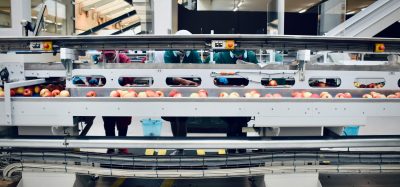

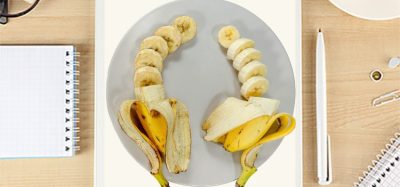



Hi Lowri,
Thank you so much for your lovely comment, and I’m really glad that I was able to help 🙂
I’ve written another article recently that may also help, too – please see the following link: https://www.newfoodmagazine.com/article/159846/how-well-do-you-understand-chocolate/
If you are keen to share a link to your blog, I’d love to read!
Thanks 🙂
Thank you for writing this article! It was a great piece to help with my research regarding couverture chocolate as I have written my own blog for Fremantle Chocolate. We are a chocolate company located in Perth Australia! I mentioned and linked your article as it helped a lot with my research 🙂